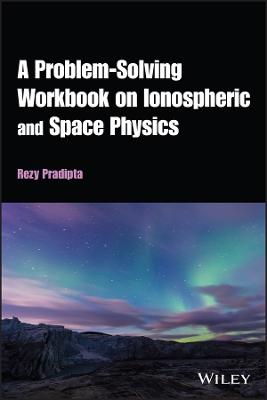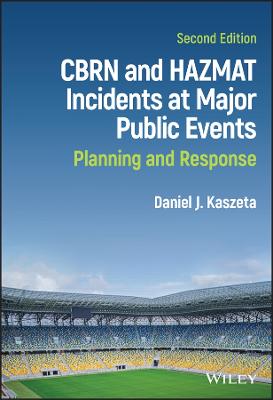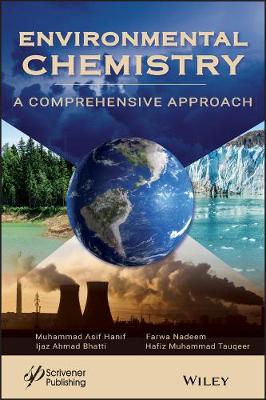Aerosol Technology
 -15%
portes grátis
-15%
portes grátis
Aerosol Technology
Properties, Behavior, and Measurement of Airborne Particles
Hinds, William C.; Zhu, Yifang
John Wiley & Sons Inc
05/2022
448
Dura
Inglês
9781119494041
15 a 20 dias
906
Descrição não disponível.
Preface to the First Edition xi
Preface to the Second Edition xiii
Preface to the Third Edition xv
List of Principal Symbols xvii
1 Introduction 1
1.1 Definitions 2
1.2 Particle Size, Shape, and Density 5
1.3 Aerosol Concentration 8
Problems 11
References 12
2 Properties of Gases 15
2.1 Kinetic Theory of Gases 15
2.2 Molecular Velocity 18
2.3 Mean Free Path 20
2.4 Other Properties 21
2.5 Reynolds Number 24
2.6 Measurement of Velocity, Flow Rate, and Pressure 27
Problems 35
References 36
3 Uniform Particle Motion 37
3.1 Newton's Resistance Law 37
3.2 Stokes's Law 39
3.3 Settling Velocity and Mechanical Mobility 40
3.4 Slip Correction Factor 42
3.5 Nonspherical Particles 44
3.6 Aerodynamic Diameter 46
3.7 Settling at High Reynolds Numbers 47
3.8 Stirred Settling 54
3.9 Instruments that Rely on Settling Velocity 56
3.10 Appendix: Derivation of Stokes's Law 58
Problems 60
References 63
4 Particle Size Statistics 65
4.1 Properties of Size Distributions 65
4.2 Moment Averages 71
4.3 Moment Distributions 72
4.4 The Lognormal Distribution 77
4.5 Log-Probability Graphs 80
4.6 The Hatch-Choate Conversion Equations 84
4.7 Statistical Accuracy 88
4.8 Appendix 1: Distributions Applied to Particle Size 89
4.9 Appendix 2: Theoretical Basis for Aerosol Particle Size Distributions 90
4.10 Appendix 3: Derivation of the Hatch-Choate Equations 90
Problems 92
References 94
5 Straight-Line Acceleration and Curvilinear Particle Motion 97
5.1 Relaxation Time 97
5.2 Straight-Line Particle Acceleration 98
5.3 Stopping Distance 101
5.4 Curvilinear Motion and Stokes Number 104
5.5 Inertial Impaction 105
5.6 Cascade Impactors 110
5.7 Virtual Impactors 115
5.8 Time-of-Flight Instruments 117
Problems 119
References 120
6 Adhesion of Particles 121
6.1 Adhesive Forces 121
6.2 Detachment of Particles 123
6.3 Resuspension 124
6.4 Particle Bounce 126
Problems 127
References 127
7 Brownian Motion and Diffusion 129
7.1 Diffusion Coefficient 129
7.2 Particle Mean Free Path 132
7.3 Brownian Displacement 134
7.4 Deposition by Diffusion 137
7.5 Diffusion Batteries 141
Problems 144
References 145
8 Thermal and Radiometric Forces 147
8.1 Thermophoresis 147
8.2 Thermal Precipitators 151
8.3 Radiometric and Concentration Gradient Forces 153
Problems 155
References 155
9 Filtration 157
9.1 Macroscopic Properties of Filters 157
9.2 Single-Fiber Efficiency 163
9.3 Deposition Mechanisms 165
9.4 Filter Efficiency 169
9.5 Pressure Drop 174
9.6 Membrane Filters 174
Problems 176
References 176
10 Sampling and Measurement of Concentration 179
10.1 Isokinetic Sampling 179
10.2 Sampling from Still Air 185
10.3 Transport Losses 188
10.4 Measurement of Mass Concentration 189
10.5 Direct-Reading Instruments 192
10.6 Measurement of Number Concentration 195
10.7 Sampling Pumps 197
Problems 199
References 200
11 Respiratory Deposition 203
11.1 The Respiratory System 203
11.2 Deposition 206
11.3 Deposition Models 210
11.4 Inhalability of Particles 213
11.5 Respirable and Other Size-Selective Sampling 215
Problems 223
References 224
12 Coagulation 227
12.1 Simple Monodisperse Coagulation 227
12.2 Polydisperse Coagulation 233
12.3 Kinematic Coagulation 238
Problems 240
References 241
13 Condensation and Evaporation 243
13.1 Definitions 243
13.2 Kelvin Effect 246
13.3 Homogeneous Nucleation 247
13.4 Growth by Condensation 248
13.5 Nucleated Condensation 251
13.6 Condensation Particle Counters 255
13.7 Evaporation 257
Problems 261
References 263
14 Atmospheric Aerosols 265
14.1 Natural Background Aerosol 265
14.2 Urban Aerosol 269
14.3 Global Effects 274
Problems 275
References 275
15 Electrical Properties 277
15.1 Units 277
15.2 Electric Fields 278
15.3 Electrical Mobility 280
15.4 Charging Mechanisms 283
15.5 Corona Discharge 289
15.6 Charge Limits 291
15.7 Equilibrium Charge Distribution 292
15.8 Electrostatic Precipitators 294
15.9 Electrical Measurement of Aerosols 297
Problems 301
References 302
16 Optical Properties 305
16.1 Definitions 306
16.2 Extinction 307
16.3 Scattering 313
16.4 Visibility 317
16.5 Optical Measurement of Aerosols 322
Problems 329
References 330
17 Bulk Motion of Aerosols 333
Problems 338
References 338
18 Dust Explosions 339
Problems 344
References 344
19 Bioaerosols 345
19.1 Characteristics 345
19.2 Sampling 347
Problems 350
References 351
20 Microscopic Measurement of Particle Size 353
20.1 Equivalent Sizes of Irregular Particles 353
20.2 Fractal Dimension of Particles 358
20.3 Optical Microscopy 362
20.4 Electron Microscopy 365
20.5 Asbestos Counting 369
20.6 Automatic Sizing Methods 371
Problems 371
References 372
21 Production of Test Aerosols 375
21.1 Atomization of Liquids 375
21.2 Atomization of Monodisperse Particles in Liquid Suspensions 380
21.3 Dispersion of Powders 382
21.4 Condensation Methods 387
Problems 388
References 389
Appendices 391
Appendix A1. Useful Constants and Conversion Factors 391
Appendix A2. Some Basic Physical Laws 393
Appendix A3. Relative Density of Common Aerosol Materials (Multiply Values by 1000 for Density in kg/m 3 and by 1.0 for Density in g/cm 3) 394
Appendix A4. Standard Sieve Sizes 394
Appendix A5. Properties of Gases and Vapors at 293 K [20 ? C] and 101 kPa [1 atm] 395
Appendix A6. Viscosity and Density of Air versus Temperature 395
Appendix A7. Pressure (a), Temperature (b), Density (c), and Mean Free Path (d) of air versus altitude 396
Appendix A8. Properties of Water Vapor 397
Appendix A9. Properties of Water 398
Appendix A10. Particle Size Range of Aerosol Properties and Measurement Instruments: (a) Application Range for Aerosol Size Measuring Instruments and (b) Size Range of Aerosol Properties (See Also Fig. 1.6) 398
Appendix A11. (a) Properties of Airborne Particles at Standard Conditions (SI Units) 400
Appendix A12. Slip Correction Factor for Standard and Nonstandard Conditions: (a) Slip Correction Factor Minus One versus Particle Diameter and Standard Conditions; (b) Slip Correction Factor versus Particle Diameter Times Pressure (per atm) for Temperatures from 233 to 893K [-40 to 600 ? C] 402
Appendix A13. Properties of Selected Low-Vapor-Pressure Liquids 403
Appendix A14. Reference Values for Atmospheric Properties at Sea Level and 293.15
Ki20 ? C] 404
Appendix A15. Greek Symbols Used in This Book 405
Appendix A16. SI Prefixes 405
References 405
Index 407
Preface to the Second Edition xiii
Preface to the Third Edition xv
List of Principal Symbols xvii
1 Introduction 1
1.1 Definitions 2
1.2 Particle Size, Shape, and Density 5
1.3 Aerosol Concentration 8
Problems 11
References 12
2 Properties of Gases 15
2.1 Kinetic Theory of Gases 15
2.2 Molecular Velocity 18
2.3 Mean Free Path 20
2.4 Other Properties 21
2.5 Reynolds Number 24
2.6 Measurement of Velocity, Flow Rate, and Pressure 27
Problems 35
References 36
3 Uniform Particle Motion 37
3.1 Newton's Resistance Law 37
3.2 Stokes's Law 39
3.3 Settling Velocity and Mechanical Mobility 40
3.4 Slip Correction Factor 42
3.5 Nonspherical Particles 44
3.6 Aerodynamic Diameter 46
3.7 Settling at High Reynolds Numbers 47
3.8 Stirred Settling 54
3.9 Instruments that Rely on Settling Velocity 56
3.10 Appendix: Derivation of Stokes's Law 58
Problems 60
References 63
4 Particle Size Statistics 65
4.1 Properties of Size Distributions 65
4.2 Moment Averages 71
4.3 Moment Distributions 72
4.4 The Lognormal Distribution 77
4.5 Log-Probability Graphs 80
4.6 The Hatch-Choate Conversion Equations 84
4.7 Statistical Accuracy 88
4.8 Appendix 1: Distributions Applied to Particle Size 89
4.9 Appendix 2: Theoretical Basis for Aerosol Particle Size Distributions 90
4.10 Appendix 3: Derivation of the Hatch-Choate Equations 90
Problems 92
References 94
5 Straight-Line Acceleration and Curvilinear Particle Motion 97
5.1 Relaxation Time 97
5.2 Straight-Line Particle Acceleration 98
5.3 Stopping Distance 101
5.4 Curvilinear Motion and Stokes Number 104
5.5 Inertial Impaction 105
5.6 Cascade Impactors 110
5.7 Virtual Impactors 115
5.8 Time-of-Flight Instruments 117
Problems 119
References 120
6 Adhesion of Particles 121
6.1 Adhesive Forces 121
6.2 Detachment of Particles 123
6.3 Resuspension 124
6.4 Particle Bounce 126
Problems 127
References 127
7 Brownian Motion and Diffusion 129
7.1 Diffusion Coefficient 129
7.2 Particle Mean Free Path 132
7.3 Brownian Displacement 134
7.4 Deposition by Diffusion 137
7.5 Diffusion Batteries 141
Problems 144
References 145
8 Thermal and Radiometric Forces 147
8.1 Thermophoresis 147
8.2 Thermal Precipitators 151
8.3 Radiometric and Concentration Gradient Forces 153
Problems 155
References 155
9 Filtration 157
9.1 Macroscopic Properties of Filters 157
9.2 Single-Fiber Efficiency 163
9.3 Deposition Mechanisms 165
9.4 Filter Efficiency 169
9.5 Pressure Drop 174
9.6 Membrane Filters 174
Problems 176
References 176
10 Sampling and Measurement of Concentration 179
10.1 Isokinetic Sampling 179
10.2 Sampling from Still Air 185
10.3 Transport Losses 188
10.4 Measurement of Mass Concentration 189
10.5 Direct-Reading Instruments 192
10.6 Measurement of Number Concentration 195
10.7 Sampling Pumps 197
Problems 199
References 200
11 Respiratory Deposition 203
11.1 The Respiratory System 203
11.2 Deposition 206
11.3 Deposition Models 210
11.4 Inhalability of Particles 213
11.5 Respirable and Other Size-Selective Sampling 215
Problems 223
References 224
12 Coagulation 227
12.1 Simple Monodisperse Coagulation 227
12.2 Polydisperse Coagulation 233
12.3 Kinematic Coagulation 238
Problems 240
References 241
13 Condensation and Evaporation 243
13.1 Definitions 243
13.2 Kelvin Effect 246
13.3 Homogeneous Nucleation 247
13.4 Growth by Condensation 248
13.5 Nucleated Condensation 251
13.6 Condensation Particle Counters 255
13.7 Evaporation 257
Problems 261
References 263
14 Atmospheric Aerosols 265
14.1 Natural Background Aerosol 265
14.2 Urban Aerosol 269
14.3 Global Effects 274
Problems 275
References 275
15 Electrical Properties 277
15.1 Units 277
15.2 Electric Fields 278
15.3 Electrical Mobility 280
15.4 Charging Mechanisms 283
15.5 Corona Discharge 289
15.6 Charge Limits 291
15.7 Equilibrium Charge Distribution 292
15.8 Electrostatic Precipitators 294
15.9 Electrical Measurement of Aerosols 297
Problems 301
References 302
16 Optical Properties 305
16.1 Definitions 306
16.2 Extinction 307
16.3 Scattering 313
16.4 Visibility 317
16.5 Optical Measurement of Aerosols 322
Problems 329
References 330
17 Bulk Motion of Aerosols 333
Problems 338
References 338
18 Dust Explosions 339
Problems 344
References 344
19 Bioaerosols 345
19.1 Characteristics 345
19.2 Sampling 347
Problems 350
References 351
20 Microscopic Measurement of Particle Size 353
20.1 Equivalent Sizes of Irregular Particles 353
20.2 Fractal Dimension of Particles 358
20.3 Optical Microscopy 362
20.4 Electron Microscopy 365
20.5 Asbestos Counting 369
20.6 Automatic Sizing Methods 371
Problems 371
References 372
21 Production of Test Aerosols 375
21.1 Atomization of Liquids 375
21.2 Atomization of Monodisperse Particles in Liquid Suspensions 380
21.3 Dispersion of Powders 382
21.4 Condensation Methods 387
Problems 388
References 389
Appendices 391
Appendix A1. Useful Constants and Conversion Factors 391
Appendix A2. Some Basic Physical Laws 393
Appendix A3. Relative Density of Common Aerosol Materials (Multiply Values by 1000 for Density in kg/m 3 and by 1.0 for Density in g/cm 3) 394
Appendix A4. Standard Sieve Sizes 394
Appendix A5. Properties of Gases and Vapors at 293 K [20 ? C] and 101 kPa [1 atm] 395
Appendix A6. Viscosity and Density of Air versus Temperature 395
Appendix A7. Pressure (a), Temperature (b), Density (c), and Mean Free Path (d) of air versus altitude 396
Appendix A8. Properties of Water Vapor 397
Appendix A9. Properties of Water 398
Appendix A10. Particle Size Range of Aerosol Properties and Measurement Instruments: (a) Application Range for Aerosol Size Measuring Instruments and (b) Size Range of Aerosol Properties (See Also Fig. 1.6) 398
Appendix A11. (a) Properties of Airborne Particles at Standard Conditions (SI Units) 400
Appendix A12. Slip Correction Factor for Standard and Nonstandard Conditions: (a) Slip Correction Factor Minus One versus Particle Diameter and Standard Conditions; (b) Slip Correction Factor versus Particle Diameter Times Pressure (per atm) for Temperatures from 233 to 893K [-40 to 600 ? C] 402
Appendix A13. Properties of Selected Low-Vapor-Pressure Liquids 403
Appendix A14. Reference Values for Atmospheric Properties at Sea Level and 293.15
Ki20 ? C] 404
Appendix A15. Greek Symbols Used in This Book 405
Appendix A16. SI Prefixes 405
References 405
Index 407
Este título pertence ao(s) assunto(s) indicados(s). Para ver outros títulos clique no assunto desejado.
Aerosol; Air Pollution; Airborne Particles; Particulate Matter; Particles
Preface to the First Edition xi
Preface to the Second Edition xiii
Preface to the Third Edition xv
List of Principal Symbols xvii
1 Introduction 1
1.1 Definitions 2
1.2 Particle Size, Shape, and Density 5
1.3 Aerosol Concentration 8
Problems 11
References 12
2 Properties of Gases 15
2.1 Kinetic Theory of Gases 15
2.2 Molecular Velocity 18
2.3 Mean Free Path 20
2.4 Other Properties 21
2.5 Reynolds Number 24
2.6 Measurement of Velocity, Flow Rate, and Pressure 27
Problems 35
References 36
3 Uniform Particle Motion 37
3.1 Newton's Resistance Law 37
3.2 Stokes's Law 39
3.3 Settling Velocity and Mechanical Mobility 40
3.4 Slip Correction Factor 42
3.5 Nonspherical Particles 44
3.6 Aerodynamic Diameter 46
3.7 Settling at High Reynolds Numbers 47
3.8 Stirred Settling 54
3.9 Instruments that Rely on Settling Velocity 56
3.10 Appendix: Derivation of Stokes's Law 58
Problems 60
References 63
4 Particle Size Statistics 65
4.1 Properties of Size Distributions 65
4.2 Moment Averages 71
4.3 Moment Distributions 72
4.4 The Lognormal Distribution 77
4.5 Log-Probability Graphs 80
4.6 The Hatch-Choate Conversion Equations 84
4.7 Statistical Accuracy 88
4.8 Appendix 1: Distributions Applied to Particle Size 89
4.9 Appendix 2: Theoretical Basis for Aerosol Particle Size Distributions 90
4.10 Appendix 3: Derivation of the Hatch-Choate Equations 90
Problems 92
References 94
5 Straight-Line Acceleration and Curvilinear Particle Motion 97
5.1 Relaxation Time 97
5.2 Straight-Line Particle Acceleration 98
5.3 Stopping Distance 101
5.4 Curvilinear Motion and Stokes Number 104
5.5 Inertial Impaction 105
5.6 Cascade Impactors 110
5.7 Virtual Impactors 115
5.8 Time-of-Flight Instruments 117
Problems 119
References 120
6 Adhesion of Particles 121
6.1 Adhesive Forces 121
6.2 Detachment of Particles 123
6.3 Resuspension 124
6.4 Particle Bounce 126
Problems 127
References 127
7 Brownian Motion and Diffusion 129
7.1 Diffusion Coefficient 129
7.2 Particle Mean Free Path 132
7.3 Brownian Displacement 134
7.4 Deposition by Diffusion 137
7.5 Diffusion Batteries 141
Problems 144
References 145
8 Thermal and Radiometric Forces 147
8.1 Thermophoresis 147
8.2 Thermal Precipitators 151
8.3 Radiometric and Concentration Gradient Forces 153
Problems 155
References 155
9 Filtration 157
9.1 Macroscopic Properties of Filters 157
9.2 Single-Fiber Efficiency 163
9.3 Deposition Mechanisms 165
9.4 Filter Efficiency 169
9.5 Pressure Drop 174
9.6 Membrane Filters 174
Problems 176
References 176
10 Sampling and Measurement of Concentration 179
10.1 Isokinetic Sampling 179
10.2 Sampling from Still Air 185
10.3 Transport Losses 188
10.4 Measurement of Mass Concentration 189
10.5 Direct-Reading Instruments 192
10.6 Measurement of Number Concentration 195
10.7 Sampling Pumps 197
Problems 199
References 200
11 Respiratory Deposition 203
11.1 The Respiratory System 203
11.2 Deposition 206
11.3 Deposition Models 210
11.4 Inhalability of Particles 213
11.5 Respirable and Other Size-Selective Sampling 215
Problems 223
References 224
12 Coagulation 227
12.1 Simple Monodisperse Coagulation 227
12.2 Polydisperse Coagulation 233
12.3 Kinematic Coagulation 238
Problems 240
References 241
13 Condensation and Evaporation 243
13.1 Definitions 243
13.2 Kelvin Effect 246
13.3 Homogeneous Nucleation 247
13.4 Growth by Condensation 248
13.5 Nucleated Condensation 251
13.6 Condensation Particle Counters 255
13.7 Evaporation 257
Problems 261
References 263
14 Atmospheric Aerosols 265
14.1 Natural Background Aerosol 265
14.2 Urban Aerosol 269
14.3 Global Effects 274
Problems 275
References 275
15 Electrical Properties 277
15.1 Units 277
15.2 Electric Fields 278
15.3 Electrical Mobility 280
15.4 Charging Mechanisms 283
15.5 Corona Discharge 289
15.6 Charge Limits 291
15.7 Equilibrium Charge Distribution 292
15.8 Electrostatic Precipitators 294
15.9 Electrical Measurement of Aerosols 297
Problems 301
References 302
16 Optical Properties 305
16.1 Definitions 306
16.2 Extinction 307
16.3 Scattering 313
16.4 Visibility 317
16.5 Optical Measurement of Aerosols 322
Problems 329
References 330
17 Bulk Motion of Aerosols 333
Problems 338
References 338
18 Dust Explosions 339
Problems 344
References 344
19 Bioaerosols 345
19.1 Characteristics 345
19.2 Sampling 347
Problems 350
References 351
20 Microscopic Measurement of Particle Size 353
20.1 Equivalent Sizes of Irregular Particles 353
20.2 Fractal Dimension of Particles 358
20.3 Optical Microscopy 362
20.4 Electron Microscopy 365
20.5 Asbestos Counting 369
20.6 Automatic Sizing Methods 371
Problems 371
References 372
21 Production of Test Aerosols 375
21.1 Atomization of Liquids 375
21.2 Atomization of Monodisperse Particles in Liquid Suspensions 380
21.3 Dispersion of Powders 382
21.4 Condensation Methods 387
Problems 388
References 389
Appendices 391
Appendix A1. Useful Constants and Conversion Factors 391
Appendix A2. Some Basic Physical Laws 393
Appendix A3. Relative Density of Common Aerosol Materials (Multiply Values by 1000 for Density in kg/m 3 and by 1.0 for Density in g/cm 3) 394
Appendix A4. Standard Sieve Sizes 394
Appendix A5. Properties of Gases and Vapors at 293 K [20 ? C] and 101 kPa [1 atm] 395
Appendix A6. Viscosity and Density of Air versus Temperature 395
Appendix A7. Pressure (a), Temperature (b), Density (c), and Mean Free Path (d) of air versus altitude 396
Appendix A8. Properties of Water Vapor 397
Appendix A9. Properties of Water 398
Appendix A10. Particle Size Range of Aerosol Properties and Measurement Instruments: (a) Application Range for Aerosol Size Measuring Instruments and (b) Size Range of Aerosol Properties (See Also Fig. 1.6) 398
Appendix A11. (a) Properties of Airborne Particles at Standard Conditions (SI Units) 400
Appendix A12. Slip Correction Factor for Standard and Nonstandard Conditions: (a) Slip Correction Factor Minus One versus Particle Diameter and Standard Conditions; (b) Slip Correction Factor versus Particle Diameter Times Pressure (per atm) for Temperatures from 233 to 893K [-40 to 600 ? C] 402
Appendix A13. Properties of Selected Low-Vapor-Pressure Liquids 403
Appendix A14. Reference Values for Atmospheric Properties at Sea Level and 293.15
Ki20 ? C] 404
Appendix A15. Greek Symbols Used in This Book 405
Appendix A16. SI Prefixes 405
References 405
Index 407
Preface to the Second Edition xiii
Preface to the Third Edition xv
List of Principal Symbols xvii
1 Introduction 1
1.1 Definitions 2
1.2 Particle Size, Shape, and Density 5
1.3 Aerosol Concentration 8
Problems 11
References 12
2 Properties of Gases 15
2.1 Kinetic Theory of Gases 15
2.2 Molecular Velocity 18
2.3 Mean Free Path 20
2.4 Other Properties 21
2.5 Reynolds Number 24
2.6 Measurement of Velocity, Flow Rate, and Pressure 27
Problems 35
References 36
3 Uniform Particle Motion 37
3.1 Newton's Resistance Law 37
3.2 Stokes's Law 39
3.3 Settling Velocity and Mechanical Mobility 40
3.4 Slip Correction Factor 42
3.5 Nonspherical Particles 44
3.6 Aerodynamic Diameter 46
3.7 Settling at High Reynolds Numbers 47
3.8 Stirred Settling 54
3.9 Instruments that Rely on Settling Velocity 56
3.10 Appendix: Derivation of Stokes's Law 58
Problems 60
References 63
4 Particle Size Statistics 65
4.1 Properties of Size Distributions 65
4.2 Moment Averages 71
4.3 Moment Distributions 72
4.4 The Lognormal Distribution 77
4.5 Log-Probability Graphs 80
4.6 The Hatch-Choate Conversion Equations 84
4.7 Statistical Accuracy 88
4.8 Appendix 1: Distributions Applied to Particle Size 89
4.9 Appendix 2: Theoretical Basis for Aerosol Particle Size Distributions 90
4.10 Appendix 3: Derivation of the Hatch-Choate Equations 90
Problems 92
References 94
5 Straight-Line Acceleration and Curvilinear Particle Motion 97
5.1 Relaxation Time 97
5.2 Straight-Line Particle Acceleration 98
5.3 Stopping Distance 101
5.4 Curvilinear Motion and Stokes Number 104
5.5 Inertial Impaction 105
5.6 Cascade Impactors 110
5.7 Virtual Impactors 115
5.8 Time-of-Flight Instruments 117
Problems 119
References 120
6 Adhesion of Particles 121
6.1 Adhesive Forces 121
6.2 Detachment of Particles 123
6.3 Resuspension 124
6.4 Particle Bounce 126
Problems 127
References 127
7 Brownian Motion and Diffusion 129
7.1 Diffusion Coefficient 129
7.2 Particle Mean Free Path 132
7.3 Brownian Displacement 134
7.4 Deposition by Diffusion 137
7.5 Diffusion Batteries 141
Problems 144
References 145
8 Thermal and Radiometric Forces 147
8.1 Thermophoresis 147
8.2 Thermal Precipitators 151
8.3 Radiometric and Concentration Gradient Forces 153
Problems 155
References 155
9 Filtration 157
9.1 Macroscopic Properties of Filters 157
9.2 Single-Fiber Efficiency 163
9.3 Deposition Mechanisms 165
9.4 Filter Efficiency 169
9.5 Pressure Drop 174
9.6 Membrane Filters 174
Problems 176
References 176
10 Sampling and Measurement of Concentration 179
10.1 Isokinetic Sampling 179
10.2 Sampling from Still Air 185
10.3 Transport Losses 188
10.4 Measurement of Mass Concentration 189
10.5 Direct-Reading Instruments 192
10.6 Measurement of Number Concentration 195
10.7 Sampling Pumps 197
Problems 199
References 200
11 Respiratory Deposition 203
11.1 The Respiratory System 203
11.2 Deposition 206
11.3 Deposition Models 210
11.4 Inhalability of Particles 213
11.5 Respirable and Other Size-Selective Sampling 215
Problems 223
References 224
12 Coagulation 227
12.1 Simple Monodisperse Coagulation 227
12.2 Polydisperse Coagulation 233
12.3 Kinematic Coagulation 238
Problems 240
References 241
13 Condensation and Evaporation 243
13.1 Definitions 243
13.2 Kelvin Effect 246
13.3 Homogeneous Nucleation 247
13.4 Growth by Condensation 248
13.5 Nucleated Condensation 251
13.6 Condensation Particle Counters 255
13.7 Evaporation 257
Problems 261
References 263
14 Atmospheric Aerosols 265
14.1 Natural Background Aerosol 265
14.2 Urban Aerosol 269
14.3 Global Effects 274
Problems 275
References 275
15 Electrical Properties 277
15.1 Units 277
15.2 Electric Fields 278
15.3 Electrical Mobility 280
15.4 Charging Mechanisms 283
15.5 Corona Discharge 289
15.6 Charge Limits 291
15.7 Equilibrium Charge Distribution 292
15.8 Electrostatic Precipitators 294
15.9 Electrical Measurement of Aerosols 297
Problems 301
References 302
16 Optical Properties 305
16.1 Definitions 306
16.2 Extinction 307
16.3 Scattering 313
16.4 Visibility 317
16.5 Optical Measurement of Aerosols 322
Problems 329
References 330
17 Bulk Motion of Aerosols 333
Problems 338
References 338
18 Dust Explosions 339
Problems 344
References 344
19 Bioaerosols 345
19.1 Characteristics 345
19.2 Sampling 347
Problems 350
References 351
20 Microscopic Measurement of Particle Size 353
20.1 Equivalent Sizes of Irregular Particles 353
20.2 Fractal Dimension of Particles 358
20.3 Optical Microscopy 362
20.4 Electron Microscopy 365
20.5 Asbestos Counting 369
20.6 Automatic Sizing Methods 371
Problems 371
References 372
21 Production of Test Aerosols 375
21.1 Atomization of Liquids 375
21.2 Atomization of Monodisperse Particles in Liquid Suspensions 380
21.3 Dispersion of Powders 382
21.4 Condensation Methods 387
Problems 388
References 389
Appendices 391
Appendix A1. Useful Constants and Conversion Factors 391
Appendix A2. Some Basic Physical Laws 393
Appendix A3. Relative Density of Common Aerosol Materials (Multiply Values by 1000 for Density in kg/m 3 and by 1.0 for Density in g/cm 3) 394
Appendix A4. Standard Sieve Sizes 394
Appendix A5. Properties of Gases and Vapors at 293 K [20 ? C] and 101 kPa [1 atm] 395
Appendix A6. Viscosity and Density of Air versus Temperature 395
Appendix A7. Pressure (a), Temperature (b), Density (c), and Mean Free Path (d) of air versus altitude 396
Appendix A8. Properties of Water Vapor 397
Appendix A9. Properties of Water 398
Appendix A10. Particle Size Range of Aerosol Properties and Measurement Instruments: (a) Application Range for Aerosol Size Measuring Instruments and (b) Size Range of Aerosol Properties (See Also Fig. 1.6) 398
Appendix A11. (a) Properties of Airborne Particles at Standard Conditions (SI Units) 400
Appendix A12. Slip Correction Factor for Standard and Nonstandard Conditions: (a) Slip Correction Factor Minus One versus Particle Diameter and Standard Conditions; (b) Slip Correction Factor versus Particle Diameter Times Pressure (per atm) for Temperatures from 233 to 893K [-40 to 600 ? C] 402
Appendix A13. Properties of Selected Low-Vapor-Pressure Liquids 403
Appendix A14. Reference Values for Atmospheric Properties at Sea Level and 293.15
Ki20 ? C] 404
Appendix A15. Greek Symbols Used in This Book 405
Appendix A16. SI Prefixes 405
References 405
Index 407
Este título pertence ao(s) assunto(s) indicados(s). Para ver outros títulos clique no assunto desejado.







